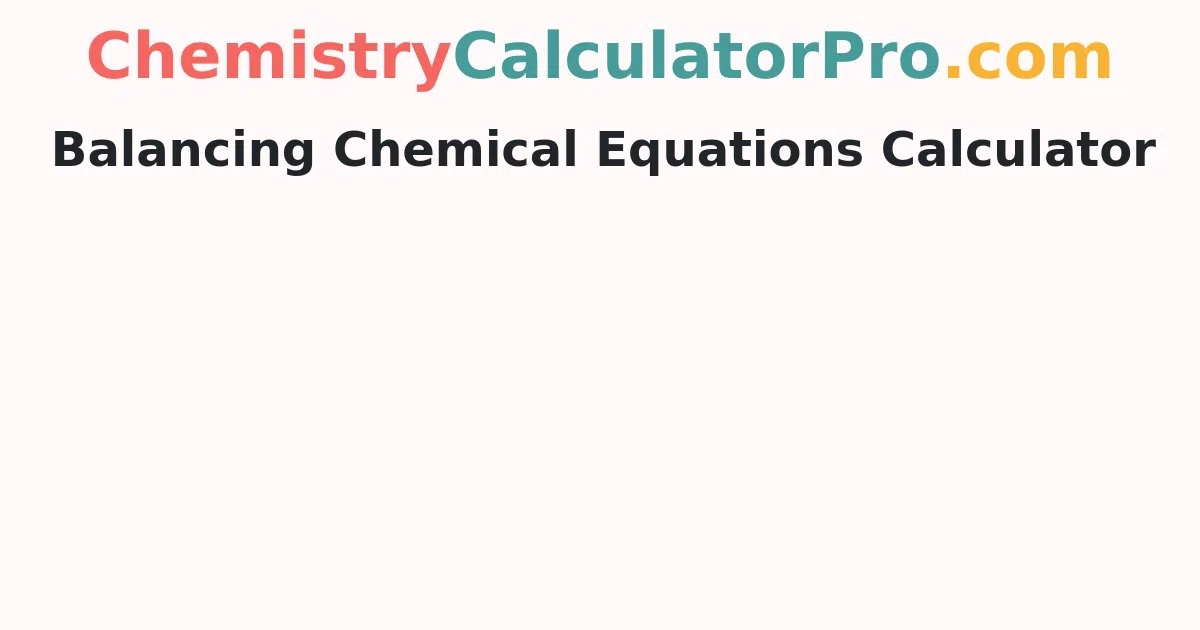Balancing Chemical Equations Calculator
To balance the entire equation in minutes, use a free and user-friendly Chemical Equation Calculator tool. To get the related instant concerned output, enter the chemical equation in the appropriate input field and press the calculate button.
What does Balancing Chemical Equations mean?
A chemical equation is the symbolic representation of a chemical reaction in chemistry. A balanced chemical equation is one in which the overall charge and the number of atoms in each element of the equation are the same on both sides of the equation (reactant and product). In other words, on both sides of the reaction, the chemical equation should have a balanced mass and charge.
How do you Balance Chemical Equations?
We provide a detailed step-by-step process for balancing any chemical equation in this article.
- Step 1: Let's assume we have any chemical equation.
- Step 2: Count the number of each and every atom on the right and left sides of the equation first.
- Step 3: To make the number of things on both sides equal, add numbers to the reactants and products.
- Step 4: Remove the common terms from the denominator and numerator.
How to Use the Calculator for Balancing Chemical Equations?
The following is the procedure how to use the balancing chemical equations calculator:
- Step 1: In the input field, type the chemical equation.
- Step 2: To get the outcome, click the "Balance" button.
- Step 3: Finally, in the new tab, the balanced chemical equation will be displayed.
FAQs on Balancing Chemical Equations
1. What is the best way to balance chemical equations?
Place coefficients in front of symbols or formulas as needed to balance a chemical equation so that the same number of each type of atom appears in both reactants and products.
2. What is the most significant information that a balanced chemical equation may provide?
If the equation is balanced, then the number of molecules, formula units, or atoms of the species involved in the reaction is represented by the coefficient numbers in the equation. The number of moles of each reactant and product is also equalized by the constants.
3. When it comes to balancing a chemical equation, what are you not allowed to do?
To balance a chemical equation, you can't change the subscripts in the formula; only the coefficients can be changed. Changing the subscripts affects the atom ratios in the molecule, as well as the chemical properties that arise.
4. When balancing chemical equations, where do coefficients go?
Place coefficients in front of symbols or formulas as needed to balance a chemical equation so that the same number of each type of atom appears in both reactants and products.
5. What are the key distinctions between chemical and physical change?
A chemical change is everlasting, whereas physical change is just transitory. Chemical change influences both physical and chemical properties, whereas physical change affects only physical qualities such as shape, size, and color. Boiling an egg and burning coal are good instances of chemical changes, while melting wax, boiling water, and freezing water are good examples of physical changes.
